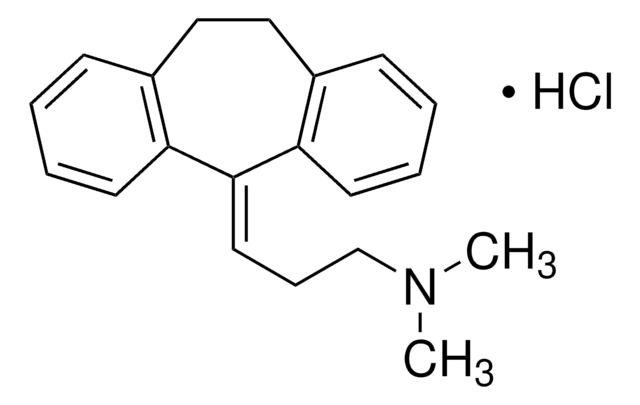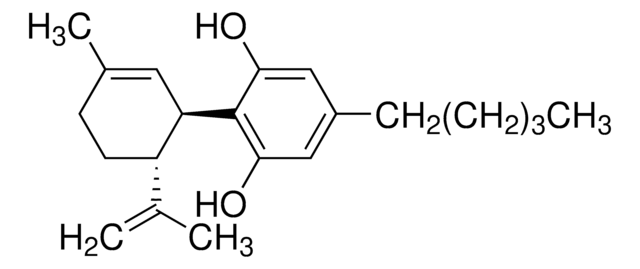A8973
2-Arachidonyl-Glycerin
~10 mg/mL, ≥98% (HPLC)
Synonym(e):
(all-Z)-5,8,11,14-Eicosatetraesäure-[2-hydroxy-1-(hydroxymethyl)-ethyl]-ester, 2-Monoarachidonoyl-glycerin
About This Item
Empfohlene Produkte
Beschreibung
9:1 mixture of 2-AG and 1-AG
Assay
≥98% (HPLC)
Form
solution
Arzneimittelkontrolle
regulated under CDSA - not available from Sigma-Aldrich Canada
Konzentration
~10 mg/mL
Versandbedingung
wet ice
Lagertemp.
−20°C
SMILES String
[H]C(CO)(OC(CCC/C=C\C/C=C\C/C=C\C/C=C\CCCCC)=O)CO
InChI
1S/C23H38O4/c1-2-3-4-5-6-7-8-9-10-11-12-13-14-15-16-17-18-19-23(26)27-22(20-24)21-25/h6-7,9-10,12-13,15-16,22,24-25H,2-5,8,11,14,17-21H2,1H3/b7-6-,10-9-,13-12-,16-15-
InChIKey
RCRCTBLIHCHWDZ-DOFZRALJSA-N
Angaben zum Gen
human ... FAAH(2166)
rat ... Cnr1(25248) , Cnr2(57302)
Suchen Sie nach ähnlichen Produkten? Aufrufen Leitfaden zum Produktvergleich
Biochem./physiol. Wirkung
Vorsicht
Physikalische Form
Signalwort
Danger
H-Sätze
Gefahreneinstufungen
Acute Tox. 4 Dermal - Acute Tox. 4 Inhalation - Acute Tox. 4 Oral - Eye Irrit. 2 - Flam. Liq. 2
Lagerklassenschlüssel
3 - Flammable liquids
WGK
WGK 2
Flammpunkt (°F)
35.6 °F - closed cup
Flammpunkt (°C)
2 °C - closed cup
Persönliche Schutzausrüstung
Eyeshields, Faceshields, Gloves, type ABEK (EN14387) respirator filter
Analysenzertifikate (COA)
Suchen Sie nach Analysenzertifikate (COA), indem Sie die Lot-/Chargennummer des Produkts eingeben. Lot- und Chargennummern sind auf dem Produktetikett hinter den Wörtern ‘Lot’ oder ‘Batch’ (Lot oder Charge) zu finden.
Besitzen Sie dieses Produkt bereits?
In der Dokumentenbibliothek finden Sie die Dokumentation zu den Produkten, die Sie kürzlich erworben haben.
Kunden haben sich ebenfalls angesehen
Unser Team von Wissenschaftlern verfügt über Erfahrung in allen Forschungsbereichen einschließlich Life Science, Materialwissenschaften, chemischer Synthese, Chromatographie, Analytik und vielen mehr..
Setzen Sie sich mit dem technischen Dienst in Verbindung.















